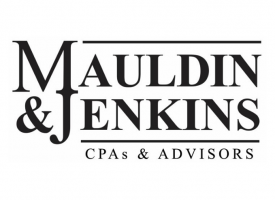Today’s nonprofit organizations face a number of challenges, including a governance landscape that is more demanding than it once was. It is no longer acceptable for governing boards to claim ignorance of potential problems relating to finances, operations or management. This increased focus on accountability, accuracy and integrity of operations heightens expectations for board transparency and effectiveness.
At the same time, the digital revolution has transformed the way nonprofits communicate with the public and allowed them to reach donors though new channels, as well as letting donors give in new ways. But a decline in government support and increased competition for private funding make effective outreach a critical priority, and donors too have become more focused on purpose, organizational effectiveness and measurable results.
To thrive in this dynamic and challenging environment, nonprofits must ensure that board members are well prepared for their role and committed to helping the organization perform at peak efficiency. These best practices can help you empower board members while maximizing transparency, integrity and regulatory compliance.
Establishing policies
Every nonprofit should have clear, written policies that minimize risk and help the organization meet financial and operational goals. Spelling out protocols and expectations increases accountability and boosts the likelihood of compliance. However, it’s not enough to simply have the policies in a book gathering dust on a shelf. To benefit from them, the organizations must teach
and enforce the rules they put in place. Your nonprofit should establish firm policies regarding:
- Investment
- Record retention
- Code of conduct
- Whistleblower activity
- Conflict of interest
- Gift acceptance
- 990 review
- Expense reimbursement
- Trustee selection criteria and process
- Term limits and succession planning for board members
- Other concerns specific to the organization
In addition to these written policies, the board should consistently monitor any potential or actual conflicts of interest and related party issues.
Optimizing performance
Board membership is a serious commitment that demands time and effort, but there are limits to what any individual member can contribute. To make best use of the board’s time, organizations should adopt strategies that enhance efficiency and insight:
- Optimize board composition. The goal is a board that is small enough to make decisions efficiently, but large enough to bring diverse experience and expertise.
- Provide training and orientation to help new board members get up to speed quickly. When feasible, mentoring is another great technique to help new members contribute to their full potential.
- Use consent agendas to accomplish more during board meetings.
- Perform work in committees versus the full board whenever appropriate.
- Conduct regular board self-assessments to identify areas for improvement as well as recognizing individual and group accomplishments.
- Maintain a constant focus on where the organization is headed and what kind of leadership it needs to get there. Strategic succession planning for board members helps prevent voids, skill gaps or imbalances in board membership.
- Utilize performance metrics and/or dashboards to gauge progress. The more specific and individualized performance goals are, the more likely board members are to meet them.
- Move away from quantitative measures (ratios) and focus instead on looking at qualitative measures (results). Numbers are important, but outcomes will always trump numbers in donors’ eyes.
Organizational leaders should take every opportunity to meet today’s greater demands for transparency around finances, performance and personnel. Strongly consider using the website to share recent audit reports and Form 990 returns (minus donor information), describe programs and outcomes, and list key board members and staff.
Successful nonprofit organizations depend on more than donor generosity. For long-term impact and mission fulfillment, a nonprofit must earn and keep the trust of funding agencies, private donors, regulatory bodies, constituents and the broader community it serves.
Following these best practices will not only provide guidance when questions arise and allow the board to govern efficiently, but also reduce the risk of losing that trust.
You can learn more ways to help your organization thrive by reaching out to the nonprofit advisors at Mauldin & Jenkins.
This content provided by Brian Carter with Mauldin & Jenkins, LLC for LeadingAge Florida.


